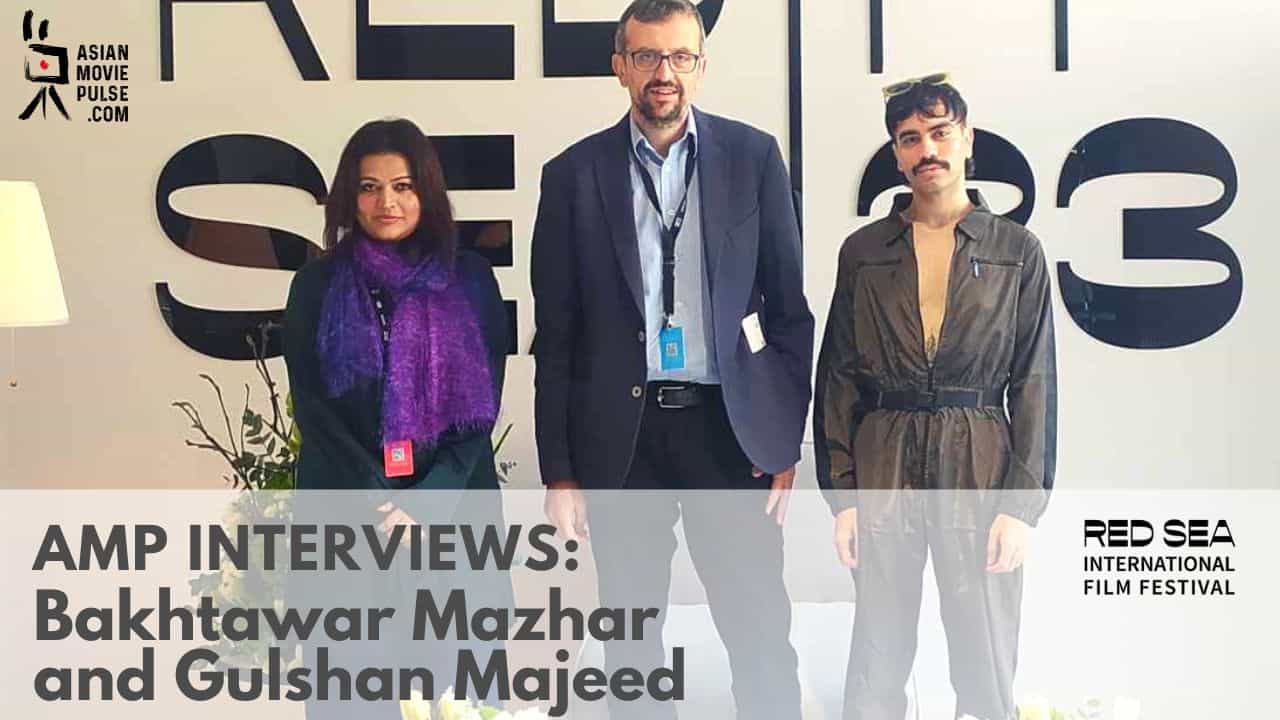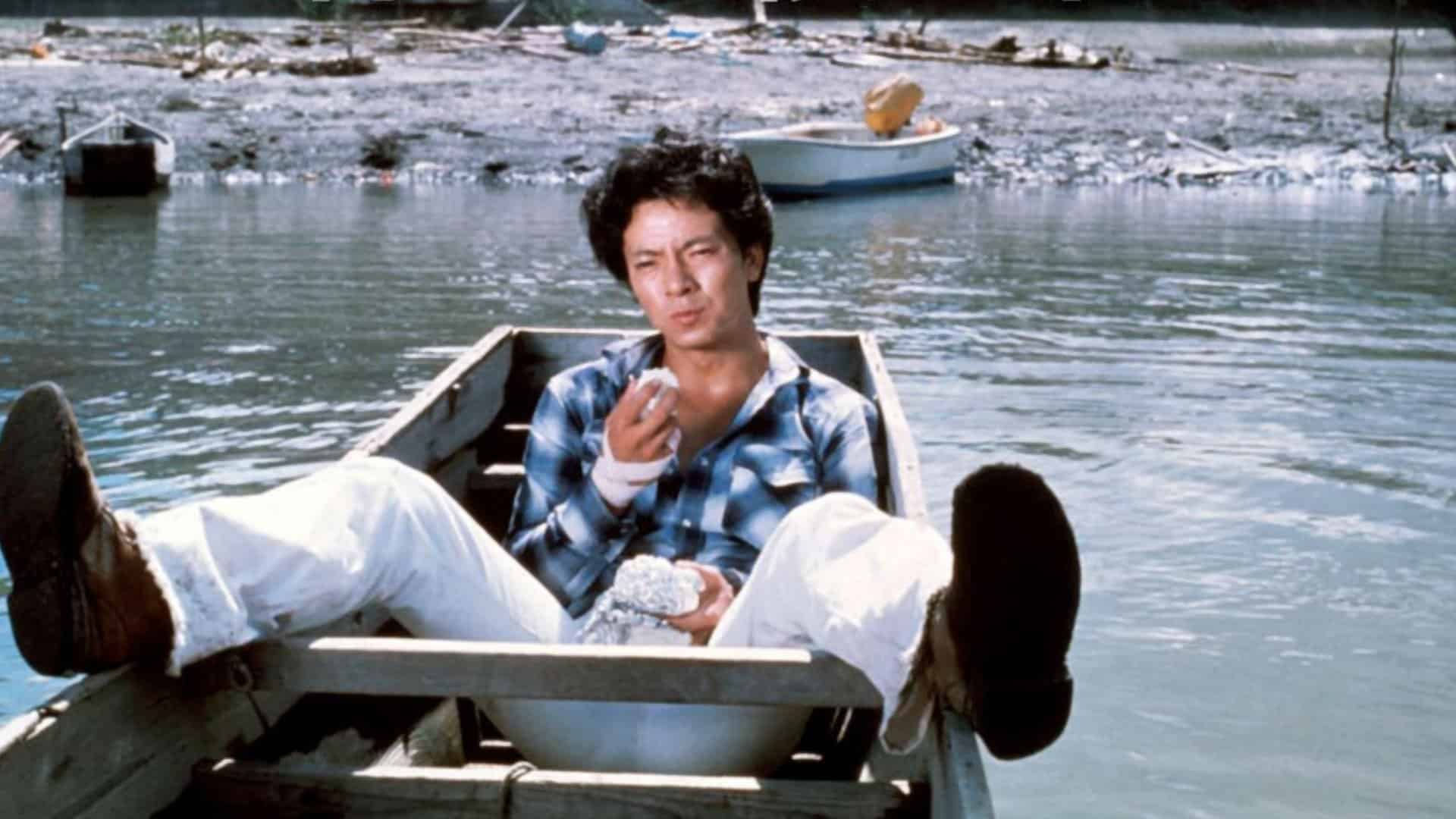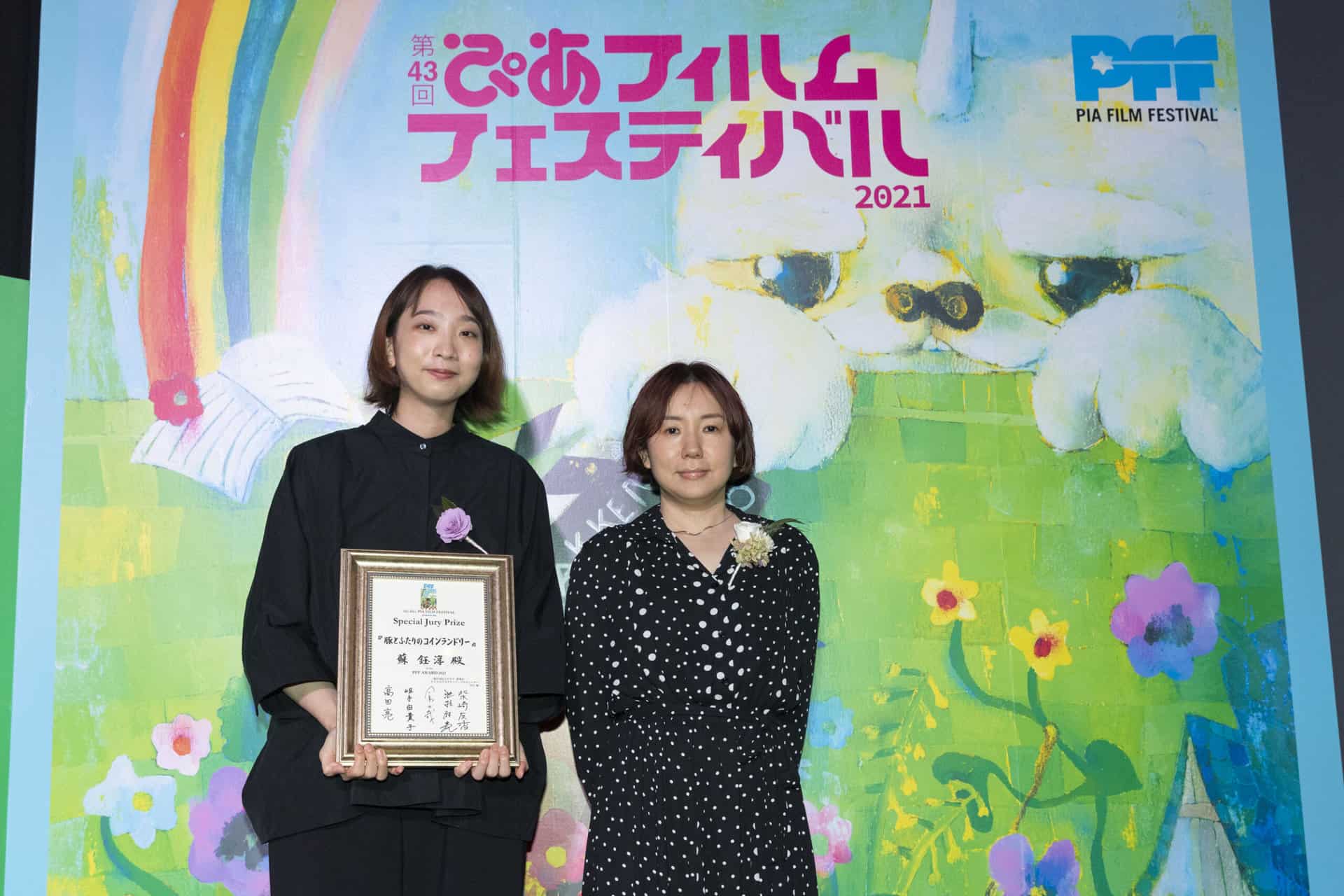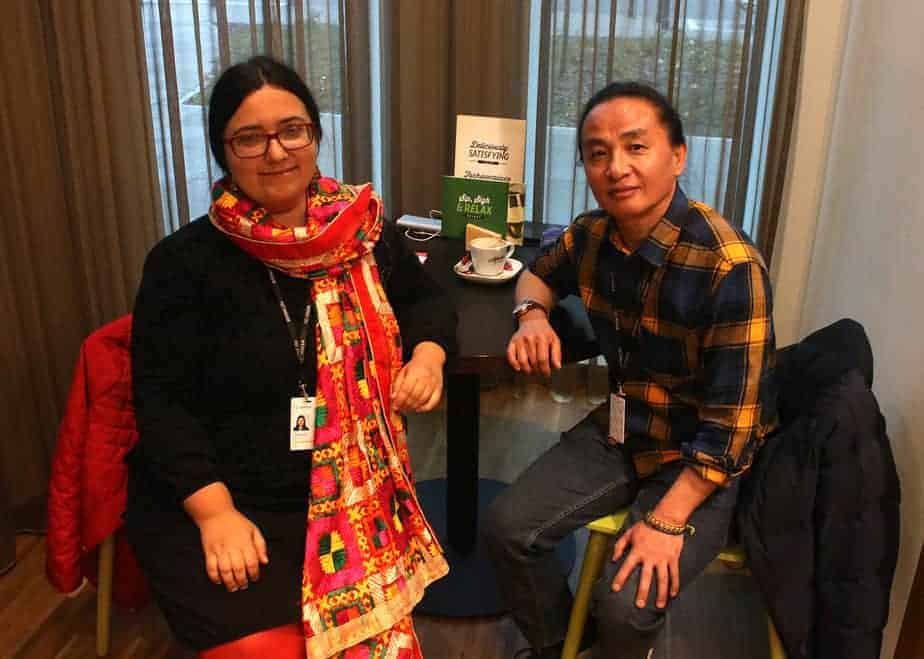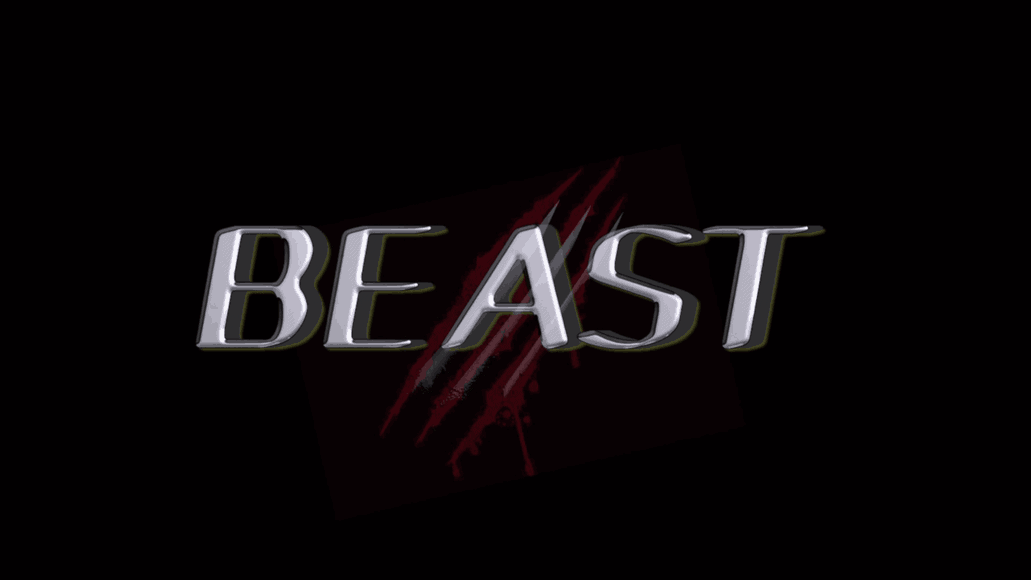Leading with a strong visual aesthetic and perfectly crafted soundscapes, Director Anirban Dutta has been featured through our Submit Your Film initiative, with such works as “Jahnabi“, “Outside the Burning Ghats” and “The Twilight Zone“. Working within his own definitive style, we decided to reach out to Anirban Dutta to discuss his artistic approach, Importance of nature in his work, and his plans for the future.
Director Bio:
A visual artist and filmmaker having loved traveling and exploring landscapes through his films on nature and humans' intangible relationship, took his debut feature Jahnabi – a personification of a river as a woman, across the globe. His experimental works on image-making in films have earned critical acclaim from many renowned artists across the globe. His work in progress project is a fiction based on a colour blind girl nestled in a village of Bengal, trying to co-exist alongside her alternate sphere of dreams and allusions. He also works with commissioned and independent artists from various countries on a regular basis. His documentary photographic series on Calcutta has won many accolades. He is also known as a sound photographer and poet in the literary circle of his home city and state, Anirban composes his narratives through various expressions and artistic mediums.
Anirban has been working as a documentary photographer since early 2014. Since then, while assisting some senior documentary filmmakers and visual artists, he developed his interests furthermore in innovative image making and cinema as a whole. Cinema came as eloquently as a responsibility of being expressed or being able to express the time and space around. Moving poetic images driven by realism and naturalism of our lives have been his primary interest in filmmaking. He has been regularly working on various commissioned projects of photography, visual art, experimental films, poetry et al.
Amongst his recent works ‘We and Our Time' – a visual art installation dedicated to a Museum in UK, A UK & India Co-production Documentary Film ‘Ghumjeeling' (Currently in post production) and his first Hindi film ‘Anubhuti' (Work in Progress) are of significance.

Your work straddles the line between traditional cinema and video installations, where do you think the border between the two exists?
The thin fine line between our birth and death defines a vast magnification of clarity that encompasses our journey as an individual and also as a part of the universe, in wholesome, what we call life. There is this inexplainable synergy that is invisible, exists and coexists between our thoughts and our expectations from nature and the people surrounding us. I feel there is this complete incompleteness in our observation, in our vision; especially the way we can ever see and imagine the world – and it shall be always incomplete as we are mere observers in this universe and our large scale craft remains radically simple ,i.e., only view and review which already exists and coexists amongst us. It shall be an unfortunate claim to define ourselves in one branch of aesthetics, as we derive from many and we belong to many schools.
We must remember that we can only feel larger than what we can ever achieve if and only if we feel at home where we are. If this is not home to us, then I doubt whether there is anywhere else we can ever find and call a second home of ours. Cinema and installation arts are two correlated arms, once we give them more headspace and increase their credibility as two fruits of different schools – though coming from one medium of expression / one person / one idea. I do not feel that there is any such border that has ever gained my attention in this regard. When I start working on something, I take as much as time as I can to pre-visualise it from scratch, until it defines itself in its own destiny.
What inspired you to take a more experimental approach in your films?
Personally, I do not think that I am an experimental filmmaker, as I am yet to become familiar with this term. I am not sure enough whether I can knowingly call myself the same, as what I do, what I am doing, what I intend to do is always clear to me. Like water, I can always see through my works even before I can complete constructing them. Needless to say that in every composition of life we do learn things, similarly cinema as an art of life, from life is no different. It is definitely a school of practice, which primarily intends to teach us way more than what we can ever aspire to. As a practitioner of this art, it brings me to a parallel world of existence which allows me to drive my research and studies further, to the world beyond Cinema.
The sound design in your films feels integral to each project's success, can you discuss your process in finding the right soundscapes?
It is always made to be a compassionate audio-visual exercise. Sound and visuals both are equally important in my films. It is true that a lot of my audience speak about my visual aesthetics ; lately I have been trying to concentrate more on designing the soundscape with equal significance. To me, my visuals are my strength that put me a step ahead to observe and imagine the apt soundscape that is needed to justify each frame.
In case of a feature / short film, I would prepare the storyboard from the time I start finalizing my script. After this,I would also try to prepare a sound script & music layout for my films, so that the visuals and soundscapes progress together as an evolving journey within time and space. Furthermore, the gestures in them define each other, guide each other, route – reroute each other.
With great location work and a strong interest in artistic philosophies and scientific symbolism, how important is the research process before filming?
I am a filmmaker of nature! I love to film outdoors. I still struggle to write something only based indoors and probably that will be something I'd challenge myself to do someday. I chance upon the existing designs of nature, frameworks that are great works of lives around us, science and arts beside us and present them symbolically – sometimes as metaphors or, at times, as a documentation of our existence. The coexistence of time and space in this regard is poignant and also something that intrigues me more than anything else in cinema. My characters are never established before their individual time and space, and, as a result of this treatment, I follow a diverse course of actions for them even when my territory is confined within a smaller space.
I believe with outdoor filming, production designing becomes more explorative and definitely more challenging , which is also worth taking the risk of. As the trajectory of a river cannot be lessened within a limit of a few balloons of thoughts, we mustn't restrict them together as a particular framework; rather we must keep them open – thorough – detailed – intense and zoomed in. Research comes with a greater passion of following such gestures in a very comprehensive style of knowing them, gazing through them. Sometimes, only observing what I have in front of my window, above my roof, below my feet gives me an immense joy and profound satisfaction of knowing them in such great details.
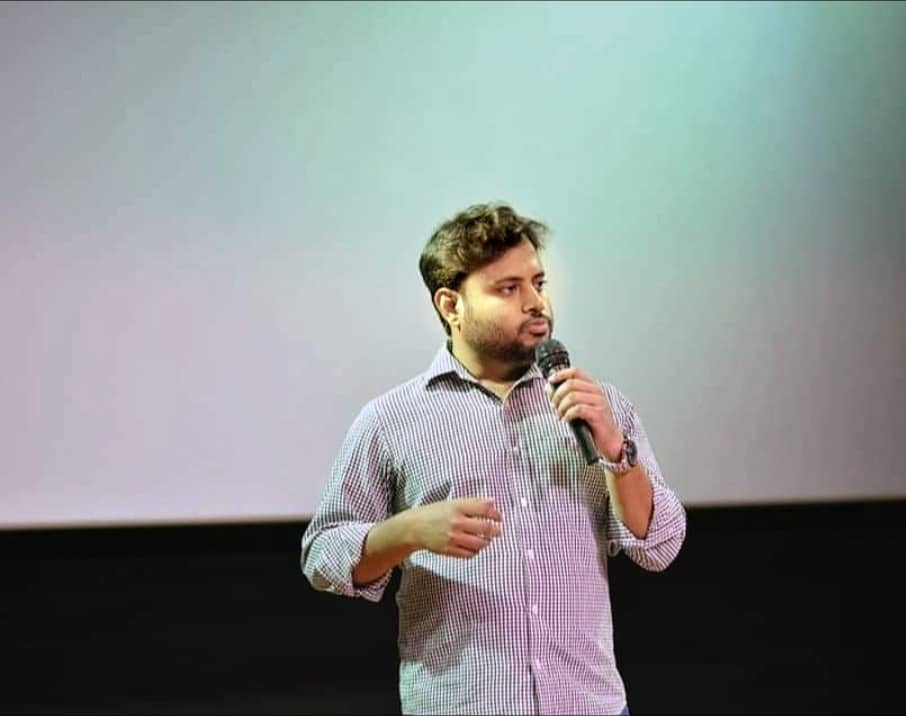
With your approach working well within the short film format, do you have any desire to do a feature length presentation?
I think I do not know how to make short films yet, as in the case of the short length formats I have only tried my hands on some installation arts, visual arts and not on narrative shorts. Though I'd still call them my cinema, I am not sure whether I can categorise them as short films. I have mostly been intrigued to make feature length films. My debut film ‘Jahnabi' was a story that traverses through various courses of a river alongside a woman's soul and body. My work in progress feature film ‘Anubhuti' is an atmospheric experience in its poetic and theatrical performance; nestled in the protagonist's thoughts and shot with her vivid imagination, who struggles to feel the colours of life, the mythological metaphors of the great 15th century Indian poet Meera Bai observes her dreams and her colours rejoicing each other.
Besides these, I have also recently worked in an international co-production project – documentary film ‘Ghumjeeling' – a story of a railway fanatic and multi disciplinary English artist and his interests in Darjeeling Himalayan Railways and arts in general. This too is in post production.
With such a unique and definitive style in your work, what advice would you give future filmmakers in finding their own voice in cinema?
Ah ! This is tricky ! I do not know whether I should and I'd really like to advise someone on filmmaking yet. Filmmaking to me is a very personalized effort and passion that drives me to a cohesive world of my imagination, my parallel existence where I can be true to myself and my characters and eventually they can even guide me through this process of discovery. This is all I can say.
What are your current thoughts on the state of the film industry in India?
As an independent filmmaker, I'd still consider myself an outsider to comment on this. Independent filmmaking goes through a series of unconditioned and uncontrollable challenges, which mainstream cinema doesn't incur to. Economically, mainstream cinema will always do more or less well, as it doesn't really differentiate itself from its derivatives and courseware. It hardly takes any risks. Artistically, its success is questionable, as it is relevant from the frequency that it has been producing for the last few decades. I'd still be in favour of mainstream Indian Cinema – that had happened two / three decades before; it used to be meaningful, reasonable, comprehensive and beautiful. Today's mainstream cinema is pointlessly disturbing and mostly the same. Independent cinema in India is definitely the rising hope that can and will hopefully sustain its time through various struggles.
Any current projects you would like to discuss and where can people find you if they want to know more about your work?
I have been working on my second feature film ‘Anubhuti' for the last two years. I have recently completed filming it and currently it is in post production. With this year's global pandemic, most of the film festivals are still operating virtually ; thus I am slowly working on its post production and looking forward to making it travel to film markets / talent platforms to receive guidance and supporting funds for the remaining work. This project has been a dream – hard to accomplish like all my other films and I am fortunate to have grown and evolved with such a creative team of people that have worked with me in this film.
I have recently started working on my next film ‘Tilottoma' – in pre-production. The film, based on a controversial tale of Hindu mythology will be a performance-based narrative.



